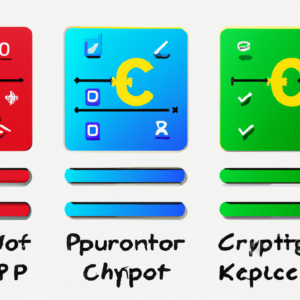
Mastering Bollinger Bands for Effective Trading
Introduction to Bollinger Bands
Bollinger Bands are a popular technical analysis tool developed by John Bollinger in the 1980s. They are used by traders and investors to analyze market volatility and identify potential overbought or oversold conditions in the price of a security. Bollinger Bands consist of three lines: the middle band is a simple moving average (SMA) of the closing prices, and the upper and lower bands are typically two standard deviations away from the middle band. This setup helps traders gauge market dynamics and make informed trading decisions.
Understanding the Basics of Bollinger Bands
Components of Bollinger Bands
- Middle Band: This is usually a 20-period simple moving average of the closing prices. It serves as a baseline for understanding market trends.
- Upper Band: Set two standard deviations above the middle band, the upper band indicates overbought conditions.
- Lower Band: Set two standard deviations below the middle band, the lower band indicates oversold conditions.
Standard Deviation
Standard deviation is a statistical measure that reflects the price volatility. By incorporating standard deviation, Bollinger Bands adjust their width based on market volatility; they widen during volatile periods and contract during calmer periods. This dynamic nature makes Bollinger Bands particularly useful in identifying the volatility of the market and potential price turning points.
Using Bollinger Bands for Trading
Identifying Market Trends
One of the primary uses of Bollinger Bands is to help identify the direction of the market trend. When the price continuously touches the upper band, the market is generally considered in an uptrend (bullish). Conversely, if the price frequently touches the lower band, the market is likely in a downtrend (bearish). A price move that starts at one band and reaches the other often indicates a strong trend.
Recognizing Overbought and Oversold Conditions
Bollinger Bands can also signal overbought or oversold conditions. When the price moves past the upper band, the security may be seen as overbought and could be due for a pullback. Similarly, if the price drops below the lower band, the security might be considered oversold and could be poised for a rebound.
Trading the Bollinger Band Squeeze
A Bollinger Band squeeze occurs when the bands contract and move closer together, typically indicating decreased volatility and suggesting that a sharp price move in either direction may be imminent. Traders often see the squeeze as a potential indicator of future market direction: a breakout above the upper band indicates a potential upward move, while a breakout below the lower band signals a potential downward move.
Strategies for Effective Trading with Bollinger Bands
Timing Your Trades
While Bollinger Bands can provide valuable insights, they work best when used with other technical indicators. Combining Bollinger Bands with indicators like the Relative Strength Index (RSI) or Moving Average Convergence Divergence (MACD) can help traders time their trades more accurately and increase their chances of successful outcomes.
Setting Stop-Loss Orders
To manage risk effectively, traders should consider setting stop-loss orders when trading with Bollinger Bands. For example, when entering a trade based on a breakout, placing a stop-loss order just outside the opposite band can help limit potential losses if the market moves against your position.
Conclusion
Bollinger Bands are a versatile and widely used tool for market analysis that can help traders make informed decisions by analyzing market volatility and identifying potential overbought or oversold conditions. However, as with any trading strategy, it’s important to use Bollinger Bands alongside other indicators and maintain strict risk management practices to maximize your trading success.

